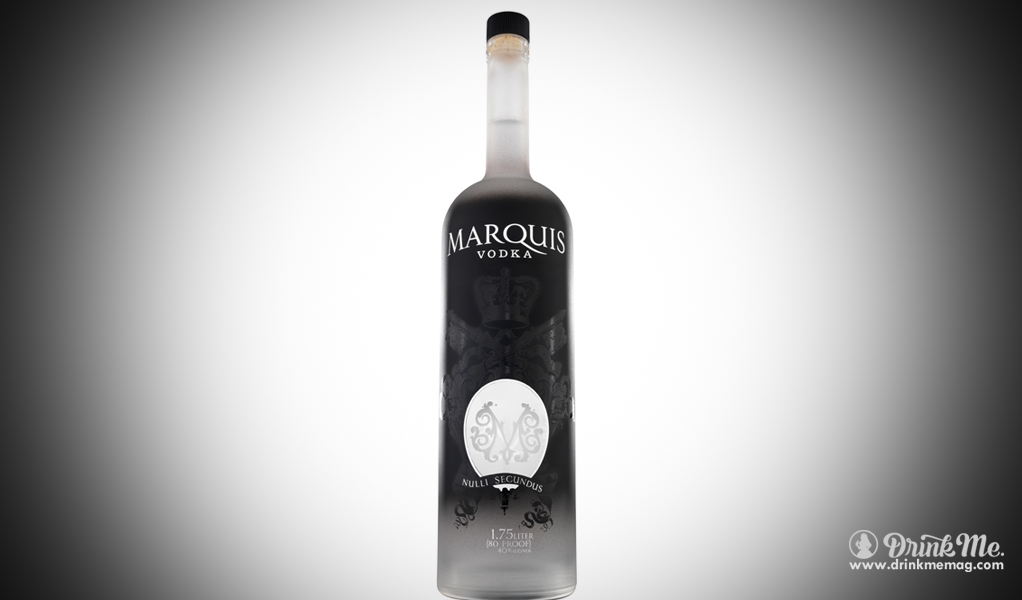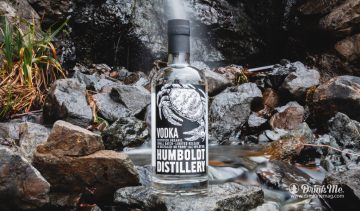My evening had been going well—nothing life-changing, mind you, but this first night at Revel, the two-billion-dollar boondoggle in Atlantic City, was chugging along pleasantly. Decent dinner, personable company, new hotel. And then I saw it: Behind the bar at one of the many venues there at which one may, if he or she chooses, get one’s swerve on, it glowed with the fire of a thousand suns in the midday sky, its color somewhere between Mountain Dew and one of those glow-in-the-dark green necklaces you get at bar mitzvahs and middle-school dances.
“DUDE” vodka, by Three Olives.
Yes, that’s actually what it says on the label, in a blocky, all-caps font nearly Ferrari-esque in its red-toned rendering: DUDE.
I didn’t know if I wanted to laugh or cry. Probably some combination of the two: A claugh.
Claughing, in fact, has become my knee-jerk reaction to so many of the more outrévodka flavors that have, in recent years, crowded the market like a gaggle of besotted girls rushing the stage at a Miley Cyrus concert. And, in fact, the flavors seem to be tailored to that very underage demographic, DUDEnotwithstanding.
Peanut butter and jelly.
Whipped cream.
Iced cake.
Then there are the vodkas that seem to cater to an ostensibly more masculine audience but that, in reality, are probably more appropriately geared toward that slim segment of the population that was born with neither tastebuds nor pride.
Tobacco-flavored vodka.
Sriracha-flavored vodka.
Wedding cake vodka. (This one, I like to imagine, comes with a disapproving father-in-law with every purchase…as well he should disapprove if you’re seriously drinking this stuff.)
Happily, the world of vodka is beginning to move past its most ridiculous period and into a new phase, of unflavored vodkas. And while there are certainly plenty of cynical, wholly concocted brands out there also getting into this newest act, the world of vodka is infinitely better now than it used to be. Plus, it allows the prospective imbiber to focus on the vodka itself, as opposed to the handiwork of the Fraggles in their lab-coats, mixing beakers deep underground in their daily efforts to come up with the next great flavor.
What makes this new trend toward focusing on the unflavored spirit so heartening is that it respects the roots of vodka itself, which has always been prized most for its purity and cleanliness.
But before we begin delving into the minutiae of some of the better unflavored vodkas on the market right now, it’s important to preface the discussion with a note that all of the brands that follow, whether or not they are ultimately to everyone’s liking, are well-crafted in their own right. Fans of spicier vodkas may prefer Tito’s; those who yearn for a vodka with a subtle citrus note will likely lean more towards Grey Goose. Both are excellent products, just different. And both allow the natural character of the spirit itself to shine though.
Which is important to consider: Even within the world of ostensibly flavorless vodka, production methods and ingredients allow the range of expressions to be far larger than you might expect. Is the vodka built on a base of rye, wheat, barley, potatoes, or something else? Is it distilled in a pot still or a column still? How many times is it filtered? What type of water is added to cut its abv down to size?
Indeed, beyond all the ad copy, there are some real differences from brand to brand.
This was thrown into sharp relief when I received two bottles of Leaf Vodka, one produced with Alaskan glacial water – “from Alaska’s Blue Lakes to create a pure, smooth taste” – and the other with Rocky Mountain mineral water – “to create a soft, smooth taste”. And while the language printed right on the front of the bottles may seem to be splitting proverbial hairs, the fact remains that they are, indeed, quite different vodkas. The glacial-water bottling exhibits almost licorice-like aromas and sweet, spicy flavors with a long, giving finish. The mineral-water version, on the other hand, has a more savory nose, and a lighter, softer texture on the palate, just as the bottle said it would. And while the differences between the two are subtle, they are very much present.
Other vodkas distinguish themselves by the quality of grains they start with or the pedigree of the still they use. Marquis Vodka, for example, is crafted from sustainably farmed rye in Poland, where it’s also distilled in a century-old copper still. The result is a vodka of pronounced spiciness and clarity on the nose and a sweet, spicy, almost buttery palate. There is some real power here, but it’s very well-balanced and a pleasure to drink. Purity Vodka, which hails from Sweden, has been distilled 34 times and is made from barley and winter wheat. It comes in a distinctive diamond-shaped bottle and is almost impossibly smooth: As close to quintessential vodka as it gets. Double Cross, from the Slovak Republic, is made with winter wheat that’s been distilled seven times and filtered the same number. The resulting spirit is phenomenal both on its own and in a cocktail, especially one that allows the vodka’s character to shine through without being overpowered.
Salute American Vodka is made with American wheat and corn, which results in a spirit with a bit of cereal quality that lends it a real sense of character. It’s also priced at $19.99, one dollar of which is donated to American Veterans’Charities. (Marquis, too, is generous in the charity arena, allowing consumers to head to the Marquis web site, enter their bottle’s product code and the retailer at which it was purchased, and then choose one of four charities, including the Worldwide Orphans Fund, Meals on Wheels, Trevor Project, and Footprints Foundation.)
Then there are vodkas that rely on a sense of exoticism to set themselves apart. Golia Vodka, for example, is made in Mongolia, and it, too, is a very good product. Exclusiv, from Moldova, also does a nice job, and while it may not be quite as elegant as, say, the Marquis, it is nonetheless a solid option, especially at approximately $10 per bottle.
The point is this: Even in the world of unflavored vodkas, the range of expressions is far broader than you might expect. And exploring as many of them as possible is an exercise that’s both informative and exciting.
It also is far less embarrassing than doing the same sort of at-the-bar research with its flavored cousins. No self-respecting adult should ever be caught in public parsing the differences between glasses of, say, Rainbow Sherbet Vodka and Pecan Pie Vodka. Or whooping it up with a shot of DUDE Vodka. Because the best of the unflavored vodkas are both infinitely more interesting and, let’s be honest here, less likely to dent your pride. Can you imagine James Bond sauntering up to the bar and requesting a Menthol Vodka martini, shaken, not stirred?
Yeah, me neither.













